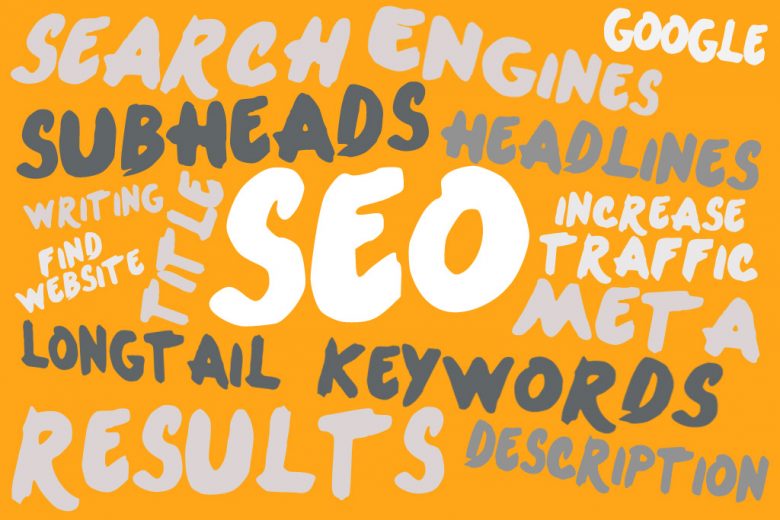How to write SEO copy for your website
Want to get found by Google? Learn the secrets to writing effective SEO copy. Find out how to use keywords and why long tail keywords are so important.
These days it’s just not enough simply to have a website. Just five minutes looking around online will tell you that the copy on your site has to be search engine optimised (SEO) too.
But what exactly does that mean? And how do you ensure your copy meets the requirements for SEO?
What is SEO copy?
In very simple terms, SEO copy means making sure that the pages on your website include keywords that people use in online searches.
This helps search engines like Google recognise that your site has plenty of helpful information for people, and will make sure it appears higher in their search engine results page (SERP). And of course, the higher you rank on search engines like Google, the more people will find your site – and hopefully buy your products and services.
So clearly, mastering good SEO copy is an important part of helping your website succeed (there’s more to just SEO than copy – including quality links and regular, unique content – but we’ll cover those in a later article).
And the good news is, despite how it may seem, learning how to write SEO copy is actually quite simple. You just need to know and follow a few simple rules about using SEO keywords.
What are SEO keywords?
SEO keywords are the words people put into search engines like Google to find what they’re looking for. So, for example, if you’re looking for a childminder in London, you’ll probably search for ‘childminder London’. And that means that if you are a childminder in London, these are great keywords to focus on in your website.
What are long tail keywords?
In addition to the shorter, more simple and popular keywords, there’s also something called long tail keywords.
This is when people search for longer or more specialised phrases (around three to five words) like ‘childminder south London emergency childcare’. If your business offers particular services, you may want to include these long tails in your site too.
What are the benefits of long tail keywords?
Short keywords like ‘childminder London’ are likely to get lots of hits, but are also probably very competitive. That means there will be lots of other websites you’ll need to compete against to get a good ranking on search results pages.
However, long tail keywords are usually much less competitive, and although they’ll get fewer searches, you’re much more likely to pick up business if you can rank highly enough with them (which is easier as there’s less competition). So it’s important not just to focus on your main keywords, but do a bit of research on possible long tails too.
Additionally, AI services play a fundamental role in SEO as they can aid in optimizing your keywords usage, ensuring that they are dispersed strategically throughout your content. Choosing a free tool from Academic Help could dramatically help in this process, making it easier to align your content with your SEO objectives. Furthermore, AI services can also analyze and suggest improvements on your content, maximizing its impact on your target audience.
Using your SEO keywords in your page titles
Once you understand the best keywords for your business, you can start to use them in your copy. And the first, most important place is in your page titles.
If you can, get your keywords as close to the start of your page title as possible. But don’t just stuff your page title full of keywords so it doesn’t make much sense. Remember that someone may be deciding whether or not to click on your page based on your page title, so make sure it’s attractive and lets them know what they will find when they click through. As a rule, try to keep your page title to less than 70 characters.
Using your SEO keywords in your meta description
As well as a page title, each page on your website will have a meta description. This is the short summary that you see in search engine results.
Again, try to use your keywords at least once in your meta description, but make sure it’s also written for the reader – it needs to make them want to click on your page to find out more. Try not to write more than 155 characters for your meta description.
Using your SEO keywords in your headlines and subheads
Every page on your site should have a main headline, and maybe a few subheads too. Where possible, try to ensure that your keywords are in your headline and your subheads. An example may be:
- Headline: Friendly childminder based in London
- Subhead: Emergency childminder childcare in London
- Subhead: Find out more about your London childminder
Using your SEO keywords in your main copy
As well as using them in your page title, meta description and header, you need to ensure your SEO keywords are included in your main body copy.
As before, try not to simply stuff them in so that the copy isn’t easy or pleasant to read. You need to find a balance of great copy, with a few uses of your SEO keyword terms – around four or five uses should be plenty. You’ll also need to make sure that your copy is long enough to get picked up, so try to ensure it’s over 300 words.
Using SEO keywords to help customers find you
And that’s it. All the main secrets to writing effective SEO copy for your website revealed! Now you can apply this knowledge and start to increase the effectiveness of your site, and hopefully help more customers and potential clients find you.
(Love more SEO copy tips? You can read 61 SEO copywriting tips here.)
Read more advice on getting the website you want
Want to create a website for your business? You’ll find more practical advice here:
- How we built a website in a morning for less than £80
- How to write the perfect About page
- Learn the secret of writing powerful headlines
- Eight questions you MUST ask your web designer










